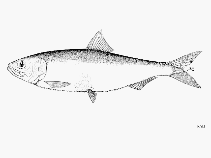http://www.fishbase.org/Summary/speciesSummary.php?genusname=Alosa&speciesname=maeotica ---> http://192.134.151.83/Summary/speciesSummary.php?genusname=Alosa&speciesname=maeotica
http://192.134.151.83/Summary/speciesSummary.php?genusname=Alosa&speciesname=maeotica ---> https://fishbase.mnhn.fr/Summary/speciesSummary.php?genusname=Alosa&speciesname=maeotica
https://fishbase.mnhn.fr/Summary/speciesSummary.php?genusname=Alosa&speciesname=maeotica ---> https://fishbase.mnhn.fr/summary/Alosa-maeotica.html
Alosa maeotica, Black sea shad : fisheries

You can
sponsor
this page
Common name (e.g. trout)
Genus + Species (e.g. Gadus morhua)
-

-
About this page
-
Languages
-
User feedbacks
-
Citation
-
Uploads
-
Related species
-


 Black sea shad
Upload your
photos
and
videos
Black sea shad
Upload your
photos
and
videos
Pictures
|
Google image
 Alosa maeotica
Alosa maeotica
Picture by
FAO
Teleostei (teleosts) >
Clupeiformes
(Herrings) >
Alosidae
(Shads and Sardines)
Etymology:
Alosa:
Latin, alausa = a fish cited by Ausonius and Latin, halec = pickle, dealing with the Greek word hals = salt; it is also the old Saxon name for shad = "alli" ; 1591 (Ref.
45335
)
.
Environment: milieu / climate zone / depth range / distribution range
Ecology
Marine; freshwater; brackish; pelagic-neritic. Temperate; 48°N - 40°N, 27°E - 43°E (Ref.
188
)
Eurasia: Black Sea and Sea of Azov.
Length at first maturity / Size / Weight / Age
Maturity: L
m
14.0
, range 13 - 15 cm
Max length : 33.2 cm TL male/unsexed; (Ref.
96734
); 33.8 cm TL (female); common length : 18.0 cm SL male/unsexed; (Ref.
188
); max. published weight: 331.70 g (Ref.
96734
); max. published weight: 331.70 g; max. reported age: 6 years (Ref.
10547
)
Dorsal
spines
(total): 0;
Anal
spines
: 0. Body fairly elongate, more `herring-like' than `shad-like'. Gill rakers thin and straight, often closely packed and pointed, usually shorter than gill filaments. Teeth well developed in both jaws. Other Black Sea
Alosa
have more gill rakers (
A. caspia
50 to 80 and
A. pontica
47 to 66).
Sardinella aurita
is more slender, has many more gill rakers and i 8 pelvic fin rays.
Non-anadromous, entering limans and lower parts of river deltas, but only occasionally in freshwater. They are more or less abundant in lower reaches of rivers and coastal lagoons. A cold-loving species, tolerating 3 or 4°C.(Ref.
188
). At sea, pelagic in deep water and enters brackish lagoons to spawn. Mature adults spawn first at 2 years and many individuals spawn for 2-4 seasons. Eggs sink to bottom. Spent individuals return to the sea to feed. In autumn, they migrate to southern Black Sea to overwinter. Juveniles migrate to the sea or estuaries during the first summer (Ref.
59043
). Adults feed mainly on small fishes (mainly sprats and anchovies) also on shrimps, gammarids and other large crustaceans (Ref.
188
). In northern Black Sea, the decline in habitat quality in suitable estuarine ecosystems is expected to have an impact in the immediate future (Ref.
59043
).
Juveniles migrate to sea or remain in estuaries during their first summer (Ref.
59043
). In autumn, they migrate to southern Black Sea to overwinter. As spring approaches, they start to move into brackish lagoons to spawn until early summer. After spawning, spent fish return to sea to feed. Many individuals spawn for 2-4 seasons (Ref.
59043
).
Whitehead, P.J.P.
, 1985. FAO Species Catalogue. Vol. 7. Clupeoid fishes of the world (suborder Clupeoidei). An annotated and illustrated catalogue of the herrings, sardines, pilchards, sprats, shads, anchovies and wolf-herrings. FAO Fish. Synop. 125(7/1):1-303. Rome: FAO. (Ref.
188
)
IUCN Red List Status (Ref.
130435
)
Least Concern (LC)
; Date assessed:
01 January 2008
CITES
Not Evaluated
Not Evaluated
Threat to humans
Harmless
Human uses
Fisheries: minor commercial
FAO - Publication:
search
|
FishSource
|
More information
Countries
FAO areas
Ecosystems
Occurrences
Introductions
Stocks
Ecology
Diet
Food items
Food consumption
Ration
Common names
Synonyms
Metabolism
Predators
Ecotoxicology
Reproduction
Maturity
Spawning
Spawning aggregation
Fecundity
Eggs
Egg development
Age/Size
Growth
Length-weight
Length-length
Length-frequencies
Morphometrics
Morphology
Larvae
Larval dynamics
Recruitment
Abundance
BRUVS
References
Aquaculture
Aquaculture profile
Strains
Genetics
Electrophoreses
Heritability
Diseases
Processing
Nutrients
Mass conversion
Collaborators
Pictures
Stamps, Coins Misc.
Sounds
Ciguatera
Speed
Swim. type
Gill area
Otoliths
Brains
Vision
Tools
E-book
|
Field guide
|
Length-frequency wizard
|
Life-history tool
|
Point map
|
Classification Tree
|
Catch-MSY
|
Special reports
Check for Aquarium maintenance
|
Check for Species Fact Sheets
|
Check for Aquaculture Fact Sheets
Download XML
Summary page
|
Point data
|
Common names
|
Photos
Internet sources
AFORO (otoliths) |
Aquatic Commons
|
BHL
|
Cloffa
|
BOLDSystems
|
Websites from users
|
Check FishWatcher
|
CISTI
|
Catalog of Fishes
:
genus
,
species
|
DiscoverLife
|
ECOTOX
| FAO - Publication:
search
|
Faunafri
| Fishipedia |
Fishtrace
| GenBank:
genome
,
nucleotide
|
GloBI
|
Google Books
|
Google Scholar
|
Google
| IGFA World Record |
MitoFish
|
National databases
|
Otolith Atlas of Taiwan Fishes
|
PubMed
| Reef Life Survey | Socotra Atlas |
Tree of Life
| Wikipedia:
Go
,
Search
| World Records Freshwater Fishing |
Zoological Record
Estimates based on models
Phylogenetic diversity index (Ref.
82804
): PD
50
= 0.5000 [Uniqueness, from 0.5 = low to 2.0 = high].
Bayesian length-weight: a=0.00724 (0.00418 - 0.01256), b=3.05 (2.90 - 3.20), in cm total length, based on LWR estimates for this species & Genus-body shape (Ref.
93245
).
Trophic level (Ref.
69278
): 4.4 ±0.8 se; based on diet studies.
Resilience (Ref.
120179
): Medium, minimum population doubling time 1.4 - 4.4 years (tmax=6).
Fishing Vulnerability (Ref.
59153
): Low vulnerability (24 of 100).
Price category (Ref.
80766
):
Low
.
Back to Search
Random Species
Back to Top
Accessed through:
Not available
FishBase mirror site :
localhost
Page last modified by :
mrius-barile
- 20 July 2016
Fatal error
: Uncaught ArgumentCountError: Too few arguments to function checkEcotox(), 1 passed in /var/www/html/summary/speciessummary.php on line 2304 and exactly 3 expected in /var/www/html/includes/speciessummary.lib.php:2579 Stack trace: #0 /var/www/html/summary/speciessummary.php(2304): checkEcotox() #1 {main} thrown in
/var/www/html/includes/speciessummary.lib.php
on line
2579
|